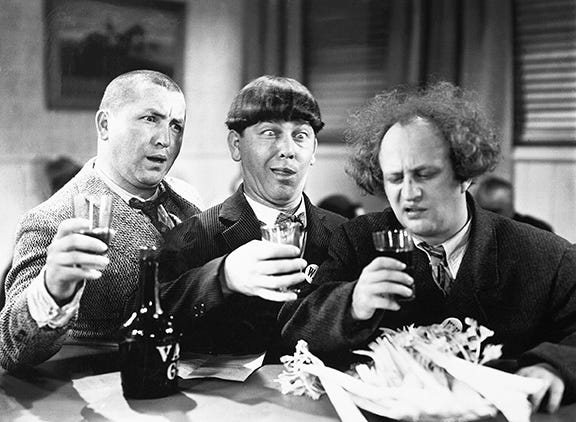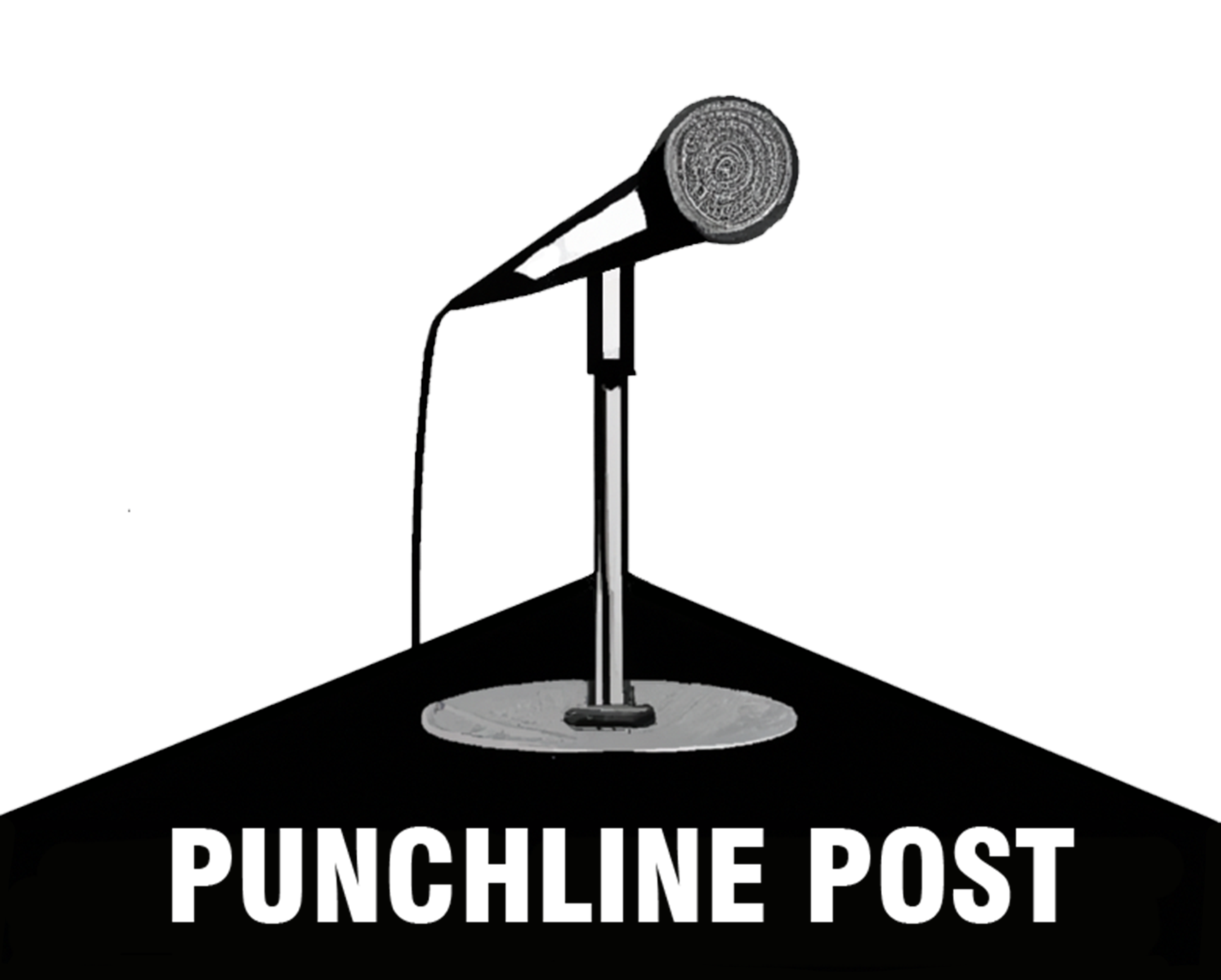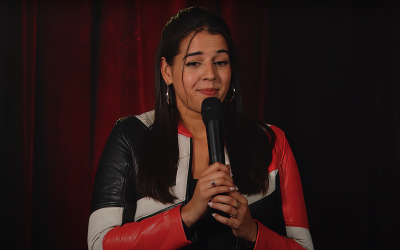May 3, 2023

Comedy, a universally appreciated form of entertainment, has been a significant part of human culture for centuries. With its roots in ancient Greece, comedy has evolved to showcase diverse styles and genres, each catering to different tastes and preferences. The core essence of comedy lies in its ability to make people laugh and engage them through humorous situations, witty dialogues, and memorable performances.
A wide range of comedic genres have emerged over time, each with its own unique characteristics and methods of delivery. From slapstick comedy, which relies on physical humor and exaggerated expressions, to the more sophisticated black comedy that delves into taboo subjects, the world of comedy offers something for everyone. Understanding the different types of comedy can help audiences select the performances that best suit their preferences and better appreciate the creative efforts of comedians.
Many comedians often incorporate elements from multiple comedic genres to create a distinctive style, keeping their audience captivated by the unexpected twists in humor. Regardless of the specific genre or style, comedy consistently plays a crucial role in society by exploring human connections and providing a much-needed escape from everyday life through laughter.
Historical Context
The origins of comedy can be traced back to ancient Greece, where Aristotle first introduced the concept of comedy as a form of corrective and social critique. He divided comedy into three categories: farce, romantic comedy, and satire, each addressing different aspects of society and human behavior (Wikipedia).
Over time, various types of comedy have emerged and evolved, shaping the course of comedic history. Among these styles are romantic comedy, satirical comedy, tragicomedy, farce, black comedy, and anti-humor (Study). Each style has its own unique approach to humor and offers a different perspective on society and human nature.
Throughout the history of comedy, many influential comedians and groups have left their mark on the genre. Charlie Chaplin, for instance, achieved widespread fame in the early 20th century with his silent films, which often employed slapstick and physical humor to create a comedic effect. His iconic character, The Tramp, became an enduring symbol of comedy and has influenced generations of comedians.
Another influential comedy group, Monty Python, emerged in the late 1960s, featuring the talents of John Cleese, Eric Idle, Michael Palin, and others. Known for their absurdist and surreal humor, Monty Python created a unique style of comedy that pushed the boundaries of conventional comedy at the time. Their television show, Monty Python’s Flying Circus, and films such as Monty Python and the Holy Grail and Life of Brian, have earned them a devoted fanbase and inspired countless comedians and comedy writers.
The Three Stooges, a mid-20th-century American comedy team, also played a significant role in shaping comedic history. Consisting of Moe Howard, Larry Fine, and Curly Howard (later replaced by Shemp Howard and later Joe Besser), the group relied heavily on slapstick humor, engaging in exaggerated fights and accidents to elicit laughter. Their enduring popularity has made them one of the most recognizable and beloved comedy acts.

These historical figures and groups, along with countless others, have shaped the landscape of comedy over time, providing both entertainment and a unique lens through which we can examine society and human behavior.
Genre and Subgenres
Comedy is a diverse and intriguing form of entertainment with multiple genres and subgenres. This section aims to briefly cover some of the most popular and enduring types of comedy, helping viewers identify and understand the various aspects of humor found within them.
Physical Comedy and Slapstick
Physical comedy relies on bodily movements, facial expressions, and exaggerated actions to elicit laughter. A classic example of physical comedy is slapstick, which often involves physical altercations, clumsiness, or exaggerated reactions, such as in the iconic antics of Charlie Chaplin.
Improvisational Comedy
Improvisational comedy, or improv, is a type of theater in which the performers create scenes, characters, and dialogue on the spot, without a script or predetermined outcome. This spontaneous and unpredictable form of comedy allows for a unique, dynamic experience, both for the performers and the audience.
Ventriloquism
Ventriloquism is a specialized form of comedy in which the performer speaks without moving their lips, seemingly projecting their voice onto a puppet or other object. Skilled ventriloquists can create humorous and engaging characters, often making it appear as though the object is genuinely talking and offering a captivating performance.
Prop Comedy
Prop comedy utilizes various objects, or props, as the primary source of humor. Performers make use of these items in creative, surprising, and unexpected ways to generate laughter, often pushing the boundaries of conventional comedy and keeping viewers on their toes.
Satire and Parody
Satire is a type of comedy that exposes and criticizes flaws or shortcomings, often within society, politics, or culture, while parody specifically targets specific works of art or popular trends. Through exaggeration, ridicule, and irony, both satire and parody encourage critical thinking about their subjects.
Sketch Comedy
Sketch comedy consists of short, scripted scenes that usually revolve around a particular theme, character, or situation. Performed on stage, television, or film, sketch comedy typically includes an ensemble cast and can vary greatly in the type of humor it employs, from lighthearted and zany to dark and offbeat humor.
Dark and Black Comedy
Dark and black comedy explores taboo subjects or controversial topics that may typically be considered inappropriate or uncomfortable for humor. Tackling these subjects in a comedic manner not only elicits laughter but also encourages reflection and discussion.
Situational Comedy and Sitcoms
Situational comedy, or sitcoms, revolves around a group of characters placed in specific situations or settings, often with recurring themes or catchphrases. Sitcoms have become a staple of television, with many popular examples like “Friends” and “Seinfeld” demonstrating the genre’s enduring appeal.
Observational Comedy and Stand-up
Observational comedy is characterized by witty observations and commentary about everyday life, often drawing from the comedian’s own experiences. This type of humor is commonly found in stand-up routines, where performers deliver monologues designed to share their perspectives and make audiences laugh at the mundane aspects of life.
Surreal and Anti-Humor
Surreal and anti-humor take comedy to unconventional and sometimes absurdist places. These genres question the nature of humor itself by playing with expectations, often producing laughter through confusion or surprise, rather than through traditional comic setup and payoff.
Social Media Comedy
As social media has become ubiquitous, comedians have found novel ways to capture audiences and experiment with different comedic styles online. This section will explore some of the popular sub-genres of social media comedy, including crowd work, sketches, and outtakes.
Crowd Work
When utilizing social media platforms, many comedians clip and share their crowd work interactions with their audiences directly. This usually involves responding to comments, direct messages, or tweets, and integrating those interactions into their comedy routines. By doing so, they make their content feel more personal and provide a unique experience compared to traditional comedy performances, without having to share the material they do in their act.
Sketches
Another popular sub-genre of social media comedy is the production of short and humorous sketches. These quick video or image-based vignettes often touch on relatable experiences, satire, or absurd humor. Comedians can create and share their sketches through platforms such as Instagram, TikTok, or YouTube, reaching an audience that may not have been exposed to their work through traditional media channels. Sketches allow comedians to experiment with their comedic style and voice in a low-risk, accessible format, helping them to build a following online.
Outtakes
Outtakes provide another avenue for comedians to engage with their audience on social media. By sharing funny or unexpected moments captured during the production of other content, these behind-the-scenes glimpses allow fans to connect with artists on a more personal level. Outtakes can highlight the creative process and show the audience that comedians are human, revealing their playfulness or vulnerability. By sharing these candid moments, it adds further depth and context to the overall comedic experience and encourages a deeper connection with the audience.
Tools and Techniques
Various tools and techniques are employed by comedians to create humorous performances. These methods help to enhance the comedic effect and engage the audience. Some of these tools and techniques include:
- Wordplay: This involves the clever manipulation of language to create humor, often through puns, double entendres, and witty expressions. Comedians will play with the meanings of words and phrases to evoke laughter.
- Irony: Irony refers to the use of words or situations to express something opposite or different from the intended meaning or outcome. This can create a humorous effect, especially when the audience can identify the discrepancy between what’s expected and what actually happens. (studiobinder)
- Sarcasm: Often used alongside irony, sarcasm is a biting, scornful response to a statement, person, or situation. Comedians use sarcasm to mock or ridicule something in a humorous way.
- Self-deprecating humor: This form of comedy involves comedians making fun of themselves or admitting their own flaws or shortcomings. By poking fun at their own absurdities, they can connect with the audience and create a relatable, humorous atmosphere.
- Banter: Clever and witty verbal exchanges between comedians or a comedian and the audience are considered banter. This lively conversation often involves teasing, mockery, or friendly jabs, resulting in laughter from both parties.
- Caricature: The deliberate exaggeration of a person’s physical, mental, or behavioral traits in a comical manner is considered a caricature. Comedians might use this technique to imitate well-known personalities or stereotypes, highlighting their peculiarities for humorous effect.
- Repartee: A quick-witted response or comeback to a comment or situation is known as a repartee. Comedians skilled in repartee can engage the audience with their clever and sharp exchanges.
- Wisecrack: A witty or sarcastic remark, often made in passing or as a brief observation, is a wisecrack. This type of humor relies on timing and delivering the apt comment at the right moment to generate laughter.
By understanding and incorporating these tools and techniques into their performances, comedians can create engaging and entertaining experiences for their audiences.
Comedy in Film and Television
Comedy has been a significant genre in both film and television, bringing laughter and joy to audiences worldwide. In the realm of cinema, various directors have shaped the comedy landscape, including the Coen Brothers, Mel Brooks, and Woody Allen. Through their unique styles and perspectives, they have created iconic comedy films that stand the test of time.
Iconic Comedy Films
Throughout the years, numerous comedy films have resonated with audiences and left lasting impressions. Examples include:
- The Big Lebowski (1998), directed by the Coen Brothers
- Young Frankenstein (1974), directed by Mel Brooks
- Annie Hall (1977), directed by Woody Allen
These films showcase various types of humor, from slapstick to witty dialogue, offering a diverse array of comedic styles for moviegoers to enjoy.
Classic and Modern Sitcoms
In television, sitcoms have been a cornerstone of comedy, captivating audiences with their relatable characters and humorous situations. Classic sitcoms such as I Love Lucy (1951–1957), Friends (1994–2004), and Seinfeld (1989–1998) are remembered for their iconic characters and memorable catchphrases.
Modern sitcoms continue to build upon these foundations, offering humor with a fresh and contemporary twist. Popular examples include:
- The Office (U.S.) (2005–2013)
- Parks and Recreation (2009–2015)
- Brooklyn Nine-Nine (2013–2021)
Audiences continue to embrace different forms of comedy, whether through film or television, as this genre reflects the diverse range of humor that appeals to viewers. From iconic comedy films by renowned directors to classic and modern sitcoms, comedy has and will continue to entertain and delight people around the world.
Comedy in Literature and Writing
In literature and writing, comedy is a genre focusing on humor and amusement. Authors use various comedic techniques to entertain their audience while exploring themes such as love, relationships, social issues, and human behavior. Comedy touches different art forms, including books, plays, films, and improvisation
Notable examples of comedy in literature date back to ancient Greece with plays written by authors such as Aristophanes. Some popular types of comedy in literature are:
- Romantic Comedy: This genre typically deals with themes of love and relationships. Characters navigate emotional ups and downs, with the story culminating in a happy union or reunion. A prime example is Shakespeare’s “As You Like It“.
- Situational Comedy: Also known as sitcoms, these stories involve recurring characters and situations, playing out amusing episodes. Situational comedy can be found in both written forms and television series.
Comedic genres often overlap, with most authors employing multiple styles to enrich their work. For instance, satire is a common element in literary comedies, utilizing wit and sarcasm to critique social and political issues. Dark comedy, on the other hand, explores heavier themes and tragic situations through a humorous lens.
In conclusion, comedy in literature adds an engaging layer of entertainment and humor to written works. Whether focused on romantic relationships or satirizing societal norms, the genre keeps readers connected to the story with laughter and thought-provoking commentary.
Comedy in Other Forms
While traditional forms of comedy such as stand-up, sketch, and satire continue to thrive, comedy has also branched out into other areas, integrating technology, science, and music. This section will explore technology-based comedy and comedy in music.
Technology-Based Comedy
As technology evolves, so does the way people create and consume comedy. The emergence of social media platforms has given rise to a new form of comedy that incorporates technology, such as viral memes, short video clips, and humorous animations. From witty tweets about the latest scientific discoveries to clever food-related jokes on Instagram, technology-based comedy has become an integral part of today’s humor landscape.
Online platforms such as YouTube have also served as a great medium for technology-based comedy. For instance, comedians like the Slow Mo Guys use high-speed cameras to film amusing situations, while others like Mark Rober experiment with food and scientific concepts in a humorous way.
Comedy in Music
Comedy is not limited to spoken words; it can also be an element of music. Musical comedy includes songs with amusing lyrics and parodies of popular tunes. Artists like “Weird Al” Yankovic have built entire careers around their comedic takes on contemporary songs. Additionally, numerous comedy musicians use satire to address social issues and current events through their music.
Comedy in music doesn’t exclusively come in the form of lyrics; it can also be conveyed through performance and style. For example, a musician might exaggerate their movements on stage, or an orchestra could play a well-known classical piece with unexpected comedic twists.
In conclusion, comedy has expanded beyond its traditional forms to embrace new platforms and mediums. Technology and music have both enriched the landscape of humor, providing audiences with more inventive and diverse ways to experience laughter.
Distinctive Comedy Styles
Comedy has numerous sub-genres, each with its own unique characteristics and audience preferences. This section will briefly discuss a selection of distinctive comedy styles, including blue humor, deadpan comics, cringe comedy, inside humor, and one-liners.
Blue Humor
Blue humor, often associated with adult audiences, focuses on sexual or vulgar topics. Not appropriate for all settings, blue humor relies on shock value, pushing the boundaries of social norms and appropriateness. Blue humor’s close cousin, black humor, depends on making the audience uncomfortable by delving into taboo subjects such as death, religion, and politics.
Deadpan Comics
Deadpan comics employ a delivery style void of emotion or enthusiasm, using dry wit to make the jokes even funnier. By maintaining a serious and expressionless face, deadpan comics often surprise the audience with the punchline, keeping them guessing as to what will happen next.
Cringe Comedy
Cringe comedy is characterized by socially awkward situations that make the audience feel uneasy, generating humor through feelings of discomfort. The humor in cringe comedy often stems from the characters’ inability to navigate the complex nuances of social interactions, leaving the audience to sympathize with them while also laughing at their awkwardness.
Inside Humor
Inside humor, also known as in-jokes, is a form of comedy that relies on a shared understanding between the performers and the audience. This type of humor often includes references to specific events, people, or experiences that are well-known to the audience but may be lost on others without the same background knowledge. Inside humor creates a feeling of bonding and camaraderie between the performers and their audience by fostering a sense of shared experience.
One-Liners
One-liners are short, concise jokes that deliver a punchline in just one or two sentences. The humor in one-liners often comes from the use of wordplay, puns, or witty observations about everyday life. One-liners are particularly popular among stand-up comedians, as they can quickly engage the audience’s attention and generate laughter in a relatively short amount of time.
Influence on Society
Comedy, in its various forms, has the power to impact society and bring about positive change on a personal and cultural level. Here, we will explore some different types of comedy and their influence on society, including social satire, high comedy and tragedy, dramatic comedy, and their everyday impact.
Social Satire
Satire, a form of comedy that ridicules or exposes the shortcomings of society, politics, and individuals, often plays an essential role in shaping public discourse and promoting social change. Researchers have found that satire can provide visibility to alternative ideas and marginalized groups, influencing news coverage and social media conversations. Moreover, satire can make even the most contentious subjects accessible, enabling audiences to engage with important issues in a lighthearted manner.
High Comedy and Tragedy
High comedy, a sophisticated form of humor characterized by its use of wit and clever dialogue, often contrasts starkly with tragedy. While tragedy may depict the downfall of flawed individuals or societies, high comedy can use humor to reveal the follies and falsehoods present in everyday life. Despite their differences, both genres can provoke introspection and elicit emotional responses from their audiences. By blending comedy and tragedy, playwrights and performers can explore complex themes while maintaining an engaging and accessible tone.
Dramatic Comedy
Dramatic comedy is a genre that combines elements of tragedy and comedy in order to create a more nuanced narrative. This blend allows audiences to experience a range of emotions, from laughter to tears and encourages empathy and reflection. Popular television shows, such as The Big Bang Theory, often employ dramatic comedy’s combination of wit, endearing characters, and relatable storylines in order to strike a balance between entertainment and meaningful storytelling. The success of such shows demonstrates the broad influence that comedy can have on contemporary culture.
Influence on Everyday Life
Comedy has the power to permeate everyday life, providing respite from stress and fostering social connections. Martin (2001) identified several mechanisms through which humor can positively impact health, such as the physiological changes brought about by laughter, the positive emotions associated with humor, and the social support that humor facilitates. Even gallows humor, which deals with dark or disturbing topics, can offer a means for individuals to cope with challenging situations or emotions.
In conclusion, comedy serves as more than mere entertainment; its influence on society can be felt in various aspects of the human experience, from promoting social change to enhancing personal well-being.
Conclusion
In this article, we have explored various types of comedy, demonstrating the diverse range of comedic genres available to entertain and amuse audiences. From the classical comedy rooted in ancient Greek and Roman writings to the sophisticated black comedy that challenges taboo subjects.
Each type of comedy serves a different purpose in storytelling, such as offering social commentary or providing an escape from reality. As discussed in Britannica, the classic conception of comedy regards it as a corrective tool that deals primarily with humans as social beings. It showcases that comedy, while providing entertainment, can also be insightful and thought-provoking.
Furthermore, it is essential to recognize that comedic genres often overlap, and comedians may fit into multiple categories. This versatility fosters creativity and innovation within the comedy sphere, encouraging performers to experiment with different styles and techniques to keep their acts fresh and engaging.
Ultimately, comedy continues to play a crucial role in our society, providing laughter and enjoyment while, at times, challenging norms and addressing important issues through a different lens. With such a rich array of comedic styles available, there’s something for every sense of humor, which contributes to the timeless appeal of comedy as a form of entertainment.
Related Articles
Kim Congdon’s New Standup Comedy Special: ‘Childless Milf’
Kim Congdon, a standup comedian known for her unapologetic humor and lively stage presence, has released her debut comedy special, Childless Milf. This release marks a significant milestone in Congdon's career, offering her growing audience a 30-minute feature of her...
Trevor Wallace Releases His First Comedy Special: ‘Pterodactyl’
Trevor Wallace, known for his hilarious sketches and the Stiff Socks podcast, recently released his highly anticipated comedy special, Pterodactyl, exclusively on Amazon Prime. Wallace has gained impressive success in the world of stand-up comedy. With a distinct...
The Best Comedy Podcasts for Every Day of the Week
In today's fast-paced world, it's crucial to stay informed and engaged with the latest news and media. However, amidst all the information overload, it's essential to find time for laughter and entertainment. Comedy podcasts offer a perfect blend of humor and...



